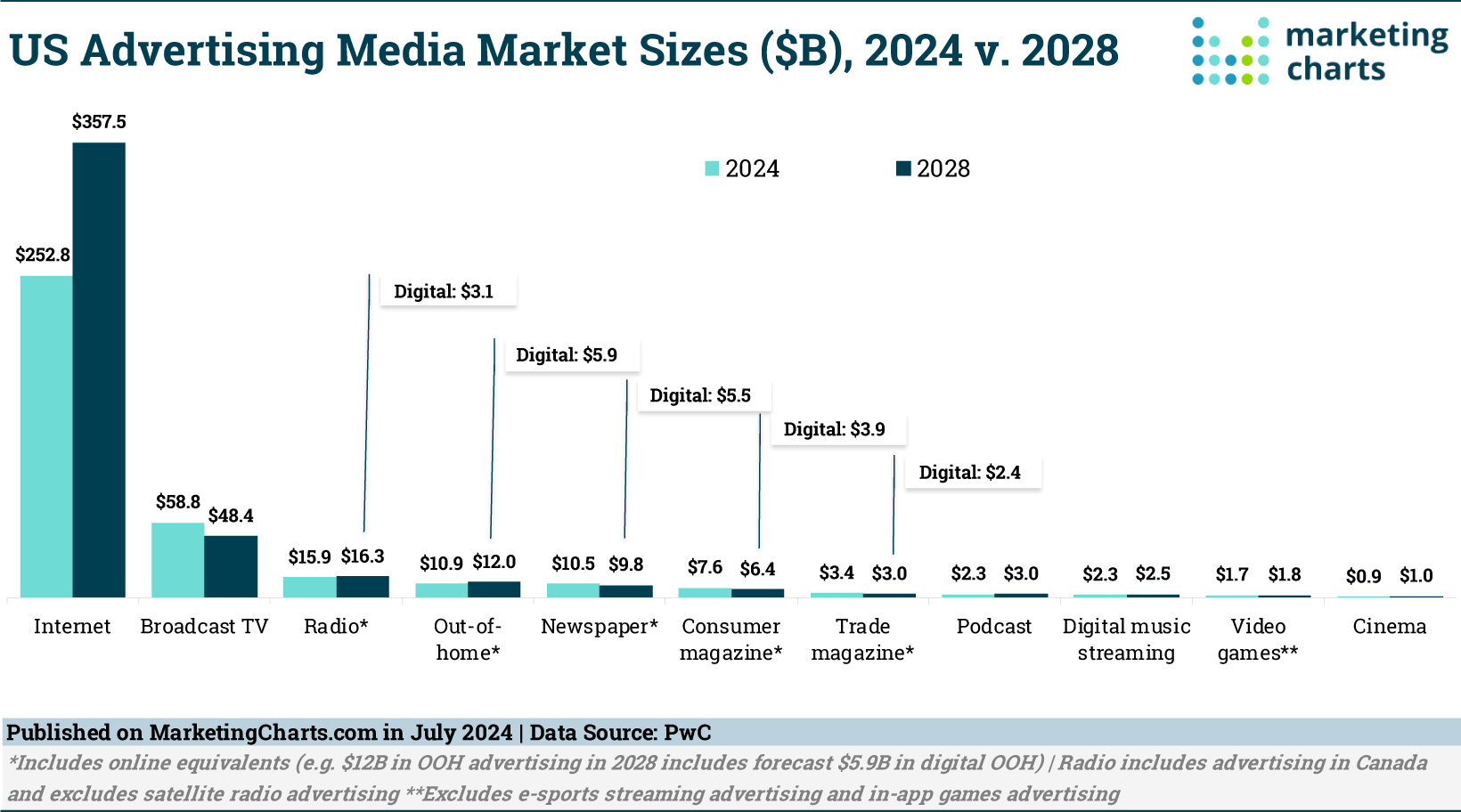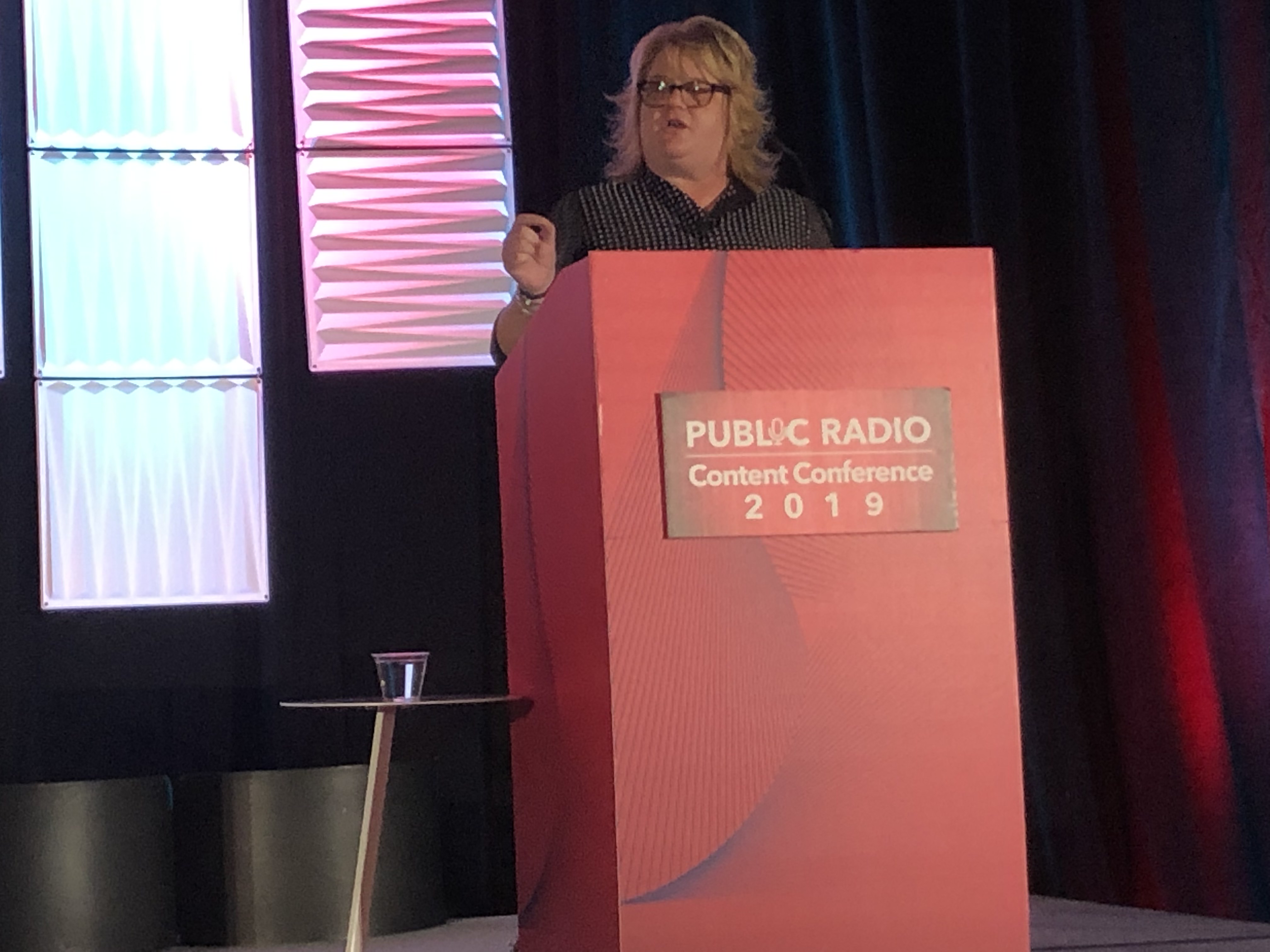
“Best of JacoBLOG” continues as we careen toward the end of another challenging year for broadcast radio. Today’s throwback post from 2024 was written by Paul Jacobs, following some whirlwind travel over the summer.
As reliant as we’ve become on platforms like Zoom to get our jobs done, there’s no substitute for eye contact with clients and consumers to better appreciate and understand this fast-changing media environment we’re experiencing.
Radio operators often spend a great deal of time strategizing the content they want to make, as well as how to distribute it. And while it IS important to “meet the audience where they are,” paying for all this stuff continues to be the monkey wrench in the equation.
So why not turn to someone like Paul with a sales background and make him explain how all this is supposed to work? And as I hope you’ll agree, he comes through…with seven smart moves every operation rooted in broadcasting ought to “white board” before the year ends. If past is prologue, we’d better start getting proactive and innovative about the future. And figure out how we’re going to pay for it. – FJ
“The Revolution Will Not Be Monetized”
By Paul Jacobs
August 20, 2024
A few scenes from the past couple of weeks:
First, I was invited to speak at both the Nebraska Broadcasters Association and the Texas Association of Broadcasters conferences – in the same week. I love doing these events, an opportunity to share our thoughts, but also to learn from broadcasters across the spectrum – from large markets with corporate ownership as well as the mom and pops in small markets.
There are variances, of course (and generally speaking, the smaller markets are doing better than the larger ones), but the central message is pretty much the same:
It’s harder than ever to grow the traditional advertising business.
Anyone who tells you otherwise is in an anomalous situation. The struggle with spot sales is across the board. And note that Texas and Nebraska aren’t swing states, so there is little or no political advertising to make up the difference this year.

My travel ended last week in my home state where I attended the Michigan Association of Broadcasters’ convention at the beautiful and iconic Grand Hotel (pictured) on Mackinac Island (for Somewhere In Time fans, this was the incredible location where they filmed the movie). I’ve never been around happier broadcasters, especially the television execs, and it was about more than the locale.
As a battleground state, Michigan’s television airwaves have been glutted with political advertising for at least a couple months now, with no end in sight. Well, the finish line is likely November 5 but that won’t slow the party down for the next 76 days. On Mackinac Island, there are no cars – just horses, bikes, and fudge stores. But there was talk about expanded inventory, adding digital channels, and more because at least the TV people in the room are looking to have banner years. Of course, they all realize their 2025 budgets will be based on growth over this year, which is going to be fundamentally impossible, but they’ll worry about that next year.
In all three states, there is a common thread – nobody is talking about broadcast revenue growth from non-political advertisers. In fact, most acknowledge it’s harder than ever to just stay flat in this environment, much less grow. This is particularly true in radio, where national business has dissipated and local advertisers have more options than ever, especially in the digital realm.
As I returned to the office late last week, I was then treated to two more data points that simply cannot be ignored:
First, PwC released its annual projection of advertising spending from 2024-2028 for each media category. As has been the case for several years now, radio is expected to barely grow, while “Internet” continues its meteoric rise.

And then over the weekend, the Harris/Walz campaign announced a major media buy of $370 million through Election Day. Broadcasters (primarily in the seven battleground states) should be strutting their stuff and working to find even more inventory. But once you go beyond the headline, here are a couple of sobering facts about radio and political:
- Of the total budget, the campaign is earmarking $200 million for digital, while $170 million is being allocated for television. A little back-of-the-cocktail math indicates absolutely no budget left for broadcast radio. The Harris/Walz media mix represents a huge departure from the way political advertising has been traditionally doled out. In fact, Harris’ Deputy Campaign Manager, Quentin Fulks, told the New York Times, “This is a modern campaign in 2024 and we’re not just stuck in the times of old, where 80% of the budget used to be on television.” While some of the “digital” dollars will be allocated to streaming TV channels, this is still a blow to the linear media business as we’ve known it.
- Radio wasn’t even mentioned. And this buy is focused on the swing states where we are told every vote counts.
Signs of decline in the traditional advertising business abound. Each day, it seems we read about RIFs and “right sizing,” not only in commercial radio, but also in public radio. Last week, WNYC announced another 8% staff cutback, which have been preceded by cuts throughout the system.
As reported recently by CNN Business (yet another news operation feeling the pain), “The traditional financial models just don’t work anymore,” Southern California Public Radio chief content officer Kristen Muller wrote in an email to listeners. “Most advertising dollars that once supported us are now heading to giant tech platforms like Facebook and Google, resulting in a significant drop in sponsorship revenue — a tough pill to swallow.”
 And then last week’s obituary for the once-proud WCBS-AM in New York City. Most of us weren’t “in the room where it happened,” but it’s not a stretch to conclude that iconic station’s ultimate fail must be due in no small part to a failure of sales to sustain this radio treasure. Yes, 1010 WINS is still providing a round-the-clock radio news service, so redundancy is a logical rationale for WCBS-AM’s demise. But in a media market of New York’s magnitude and given the station’s long-time relationship with the advertising community, you might expect a different outcome.
And then last week’s obituary for the once-proud WCBS-AM in New York City. Most of us weren’t “in the room where it happened,” but it’s not a stretch to conclude that iconic station’s ultimate fail must be due in no small part to a failure of sales to sustain this radio treasure. Yes, 1010 WINS is still providing a round-the-clock radio news service, so redundancy is a logical rationale for WCBS-AM’s demise. But in a media market of New York’s magnitude and given the station’s long-time relationship with the advertising community, you might expect a different outcome.
This friction in some of the U.S.’s biggest radio markets should tell us something about the state of the union as 2024 painfully chugs along. The up arrows remain reserved for digital marketers, while everyone else is left fighting the media scraps. As I travel to conferences and participate in scores of Zoom calls every week, it is sadly startling to hear so many broadcast leaders still trying to grapple with this reality and make the requisite shifts in their operations.
Look at the time. It’s getting really late. What I just shared with you are facts, not alternative facts or somebody’s hopes for a future that is slipping away. Stations of all sizes, markets, and formats need to accept the reality of the inexorable shift away from revenue for linear broadcasting as it races headlong into the digital department. The trends of the past several years since the pandemic are solidifying, if not accelerating.
But if there’s good news in this cautionary tale, it’s that no industry of this magnitude can pivot as quickly and efficiently as radio. It costs significantly more to re-tool a television station, a newspaper operation, or movie theaters than it does radio. But the transition doesn’t just requires a few keystrokes on a spreadsheet as broadcasters re-allocate their resources and investments in digital content. It is mandatory to instill a mindset change throughout the building or the organization – including in the sales department – if it is to succeed.
 At issue here is that in spite of the unassailable revenue trend line toward digital – and away from linear – most of the companies that make up our business still talk, walk, and think like radio companies first. You know that old saying about the duck. Even as radio companies excise the R-word from their business cards and websites in favor of “media” or some other 21st century monikers, the fact is, most continue to view their world from a “radio first” perspective. Yes, digital is now part of the menu of entrees and appetizers the salespeople can sell, but they are too often an afterthought in their marketing hierarchy.
At issue here is that in spite of the unassailable revenue trend line toward digital – and away from linear – most of the companies that make up our business still talk, walk, and think like radio companies first. You know that old saying about the duck. Even as radio companies excise the R-word from their business cards and websites in favor of “media” or some other 21st century monikers, the fact is, most continue to view their world from a “radio first” perspective. Yes, digital is now part of the menu of entrees and appetizers the salespeople can sell, but they are too often an afterthought in their marketing hierarchy.
Right now, the radio lens is a problem, and it permeates most stations. Programmers continue to sweat their over-the-air ratings as they’ve done since the days of Bill Drake. Sellers continue their quest for the lowest-hanging fruit (despite the fact it is rotting). And just about everyone in the operation is incentivized on the linear numbers and broadcast sales. Staffing is usually pitched toward broadcast with digital being an afterthought.
their quest for the lowest-hanging fruit (despite the fact it is rotting). And just about everyone in the operation is incentivized on the linear numbers and broadcast sales. Staffing is usually pitched toward broadcast with digital being an afterthought.
Here’s the test:
In the middle of the day today, your station goes off the air. How long does it take someone with the authority to do something to find out what’s happened? Seconds? A minute, at most?
But what if the stream goes down? Or the app gets a bad update and isn’t working? Or your command to Alexa suddenly connects a listener to a radio station in New Zealand?
An hour? A day? Until a listener calls the station to tell you about it? Companies communicate what’s really valuable by how their org charts are arranged and defined, and how their budgets are structured. Priorities, priorities.

Fred has written before about Nancy Lyons (pictured), a Twin Cities-based head of the Clockwork ad agency. Nancy acknowledges the need to shift to digital but warns about the “analog transformation” – the people who need to drink the Kool-Aid, smell the coffee, get the memo, WTFU, and help their operations make the shift. Or get out of the way.
But we can’t fix it all this week. And because my background in sales, it is obvious that if the industry’s revenue generation systems were working well, we might not be in the current morass. So here are my suggested moves (and I’m eager to hear yours):
1. Cut ties with salespeople who cannot– or refuse to – sell digital. I honestly don’t understand why a seller – who is supposed to be money motivated by nature – cannot recognize the revenue shift happening in front of our windshields, and not want to go all in. Yet, how many salespeople at your stations simply refuse to sell digital, hiding behind the excuse of “I’m a radio salesperson” or their age (“That’s for younger salespeople”), or they just go through the motions?
At this stage, it’s time for those people to consider another line of work or that condo in Tucson, because based on these revenue trends, there is little to no chance their billing will grow this year or in the future. They are simply fishing in a pond that’s shrinking. And they’re taking the place of someone who could be helping the operation grow – or at least hang on.
I’m not suggesting you clean house today, but at minimum I would insist that any salesperson hired in the future have digital sales skills and experience and/or possess mass quantities of digital energy. That’s what it’s going to take.
It might also make sense to review how your sales offerings are structured and commissioned. Think like a salesperson – are you attaching the most attractive incentives to the inventory you most want to move? If not, don’t expect your sellers to do what you ask for the good of the operation. It doesn’t work that way.
2. Pigs can’t fly. So stop handing out wings. Some salespeople simply cannot get their heads around selling digital, but it amazes me how many stations keep trying to push this boulder uphill. They’ve tried increasing commissions, training seminars, offsites, consultants, cajoling, yelling, pleading, and more.
uphill. They’ve tried increasing commissions, training seminars, offsites, consultants, cajoling, yelling, pleading, and more.
When I ask managers why they still engage in this futile practice, a commonly stated excuse is this: “The traditional radio salesperson considers the accounts theirs, and in many cases they have a great relationship with the client and we are concerned about upending it.”
We should be way past the point where letting 1995 thinking rule in the Age of AI. It’s time to either get these people to buy in, replace them, or hire a digital sales team and turn them loose on all accounts. Way too much money is being left on the table.
3. Every digital item should be scrutinized and evaluated. Most managers can tell you chapter and verse about their Nielsen or Eastlan ratings – panel changes, time-spent listening trends, cume, turnover, ethnic sampling, etc. But ask about the particulars of their digital assets, and the feedback typically gets fuzzier.
Most aren’t conversant about what’s a good number, much less how to read and understand digital reports. Some of this is understandable because in many cases, the data is spread all over the place. And many are working without a dashboard that aggregates all this user information.
The end result? Digital metrics go up, they go down, they go sideways. And most managers in the building, whether they’re in content or marketing, don’t know what to do with them anyway.
You’re not going to effectively sell or market these assets if you don’t understand them, aren’t losing sleep over them, and don’t know how to move them.
Of course, this requires knowledge, prioritization, and understanding. And maybe bringing in people outside the radio sales pool with a broader perspective in how to move the digital needle.
4. Sales needs to start being proactive. Rather than waiting for the programming or digital department to roll out another “next big digital thing,” why not determine what your sellers need in order to generate revenue and provide a service to clients?
Maybe it would be helpful to have an email database two or even three times the size of what it is now. And maybe it means surveying those people to determine their intent to purchase in the coming year: a house, a car, a new addition, sending a kid to college, moving a parent to a congregate living facility, taking an international vacation, or hiring a financial planner.
Perhaps it means putting together an event marketing plan in a market and audience conducive to paying for live entertainment. Or a branded podcast or newsletter produced in conjunction with a paid advertiser (who also can provide expertise and content).
If you think you can sell it or perceive a need for it in the marketplace, why not take the lead and help the company figure out how to accomplish it?
5. Do your homework. So much of the way our industry has gone about mapping out any semblance of a digital strategy has been almost entirely a SOTP mission.
Seat of the Pants.
And look where that’s gotten you.
You cannot research everything, especially something the market or your audience hasn’t experienced before. But you can do that all-important due-diligence to determine who you’re up against, the size of the market, and consumer desire.
And sometimes, conducting a short survey among your database members supplies just enough confidence – or discouragement – to help you make that decision. Because every screwup, misfire, and irrationally exuberant move will cost you big-time in 2025, including impacting your sales team’s confidence. Ask any CEO – there’s no margin for error.
6. The ratings ain’t what they used to be. Nothing is. This isn’t a knock on the ratings companies, but it stands to reason that if fewer dollars are attached to ratings, then they simply aren’t as important.
It’s simple math. And if Nielsen, Eastlan or anyone else cannot provide media companies with a more holistic measurement of all their audience engagement, this current disheartening trend will only continue. Or get worse.
Digital data and analytics are more important than ever, because more dollars are allocated on those metrics than radio.
Once again, the good news for radio is that no other medium has the ability to move its (still) large cume to digital content. When a station promotes a newsletter or a podcast that’s relevant, the audience moves. But without accessible, reliable, and affordable measurement of your success and the corresponding skill to monetize it, what’s the point?
7. Commit to increasing your digital footprint. It’s where “the fish are.” If conventional ratings aren’t as directly valuable to revenue as they used to be, why does so much of our programming efforts focus on squeezing another 15 minutes of listening or limiting the number of your stopsets and their placement on the clocks?
programming efforts focus on squeezing another 15 minutes of listening or limiting the number of your stopsets and their placement on the clocks?
What would happen if there was an all-out commitment throughout the station to increasing streaming, podcasts, newsletters, livestream video, website visits and engagement, and building up one of the most valuable tools a station can have – its email database?
When a client’s ratings go up – or down – they call us and we talk about it. But I can’t tell you the last time a client called to brag about their streaming numbers or downloads. This simply doesn’t happen.
There’s a disconnect between the investment in time and resources at stations and where the dollars are shifting. This is central to what is holding radio back – a lack of investment in quality digital content, setting priorities for the station about the most important KPIs (key performance indicators), staffing properly, and goal-setting.
Get smarter by hiring a digital content specialist – most of the PDs working in radio today are capable – at radio. But many will also tell you they either don’t have the time or the aptitude to create competitive digital content.
Radio cannot turn the tide without this change happening. The revenue isn’t going to magically start flowing into :60s and :30s again. The toothpaste is out of the tube.
 One thing I’ve heard from many broadcasters is that they don’t know where to start. They may not really understand digital content and what they should be creating, how to price and budget, how to train and structure a sales team, and what the metrics mean. As Jacobs Media embarks on our newest initiative – Jacobs D.R. – that’s our primary focus. But it’s going to be a long slog to turn around 100 years of doing radio one way and merely flipping a switch.
One thing I’ve heard from many broadcasters is that they don’t know where to start. They may not really understand digital content and what they should be creating, how to price and budget, how to train and structure a sales team, and what the metrics mean. As Jacobs Media embarks on our newest initiative – Jacobs D.R. – that’s our primary focus. But it’s going to be a long slog to turn around 100 years of doing radio one way and merely flipping a switch.
But if we don’t get started soon, the radio industry won’t be able to count on political dollars much less agency dollars in the near future.
Email me and tell me what you’re thinking: [email protected] or leave a comment or idea in the blog.
- For Radio, Will It Be Christmas In April (And Hopefully, May)? - April 21, 2025
- The Revolution Will Not Be Monetized - December 30, 2024
- What Kind Of Team Do You Want To Be? - October 4, 2024





This whole radio/digital thing needs some tough love. For example: “What would happen if there was an all-out commitment throughout the station to increasing streaming, podcasts, newsletters, livestream video, website visits and engagement, and building up one of the most valuable tools a station can have – its email database?” Answer: If this was done really well, revenue might increase by 5%, but likely less. Its all worth doing but it won’t come close ro revitalizing the radio business, or any individual station.
Digital can’t be radio’s savior even theoretically without defining what “digital” is. Is it the type of things you described – developing other ways to reach your radio audience? There’s mothing wrong with doing that, but if the audience is shrinking, it’s not a great long term target. What about becoming like manufacturer’s reps who carry multiple lines? Maybe, but what lines will you carry? How much commission is available to the station and to the rep? What digital assets are you selling? Are they aligned with your radio brands or just digital tonnage as part of a kitchen sink approach. What about creating/acquiring your own digital products? Radio missed that opportunity when it comes to audio, but they may be able to create, mix and match in some way where all the products tie together somehow – but that’s a long term approach that would have to be implemented by outsiders, as radio’s top dogs know nothing about any of this. Expecting people who were hired as radio sellers to somehow embrace/sell ill defined and generally less lucrative digital products seems a bit of a stretch.
Radio could do better by looking at the NFL. What is their product and how are they investing their payroll? Many “broadcasting” companies are transitioning to “digital” -and somehow moving away from putting the players on the field. The old saying was “dance with who brung ya”. It’s true that many end users are getting their “stuff” from phones and apps and stuff-but content is still the king of it all. Where would Detroit’s NFL team be after a “reduction in force”? It’s always appeared that family-owned NFL teams have a way of doing business with massive amounts of money. Many are just “small businesses” -not dealing with stock prices, boards of directors or other impediments to success, financial or otherwise. Everything that the NFL uses (digital, broadcast, print) focuses in on one thing. The product. I’m just sayin’.
It is also very interesitng how the NFL doesn’t just breek great athletes – they develop personalities that are special. (Same with the NBA, to a great extent.) Baseball is a whole different thing. As I recently read, there’s a reason why no MLB stars are making commercials with Jake from State Farm. They just aren’t that interesting OR they’re not being packaged and branded that way. Many radio stations hae a personoality (or even two) who could be having a more impactful effect on their brands and stations. As you point out, Dave, “downsizing” thme, cutting them back, and forcing them into small boxes isn’t the way to develop them.